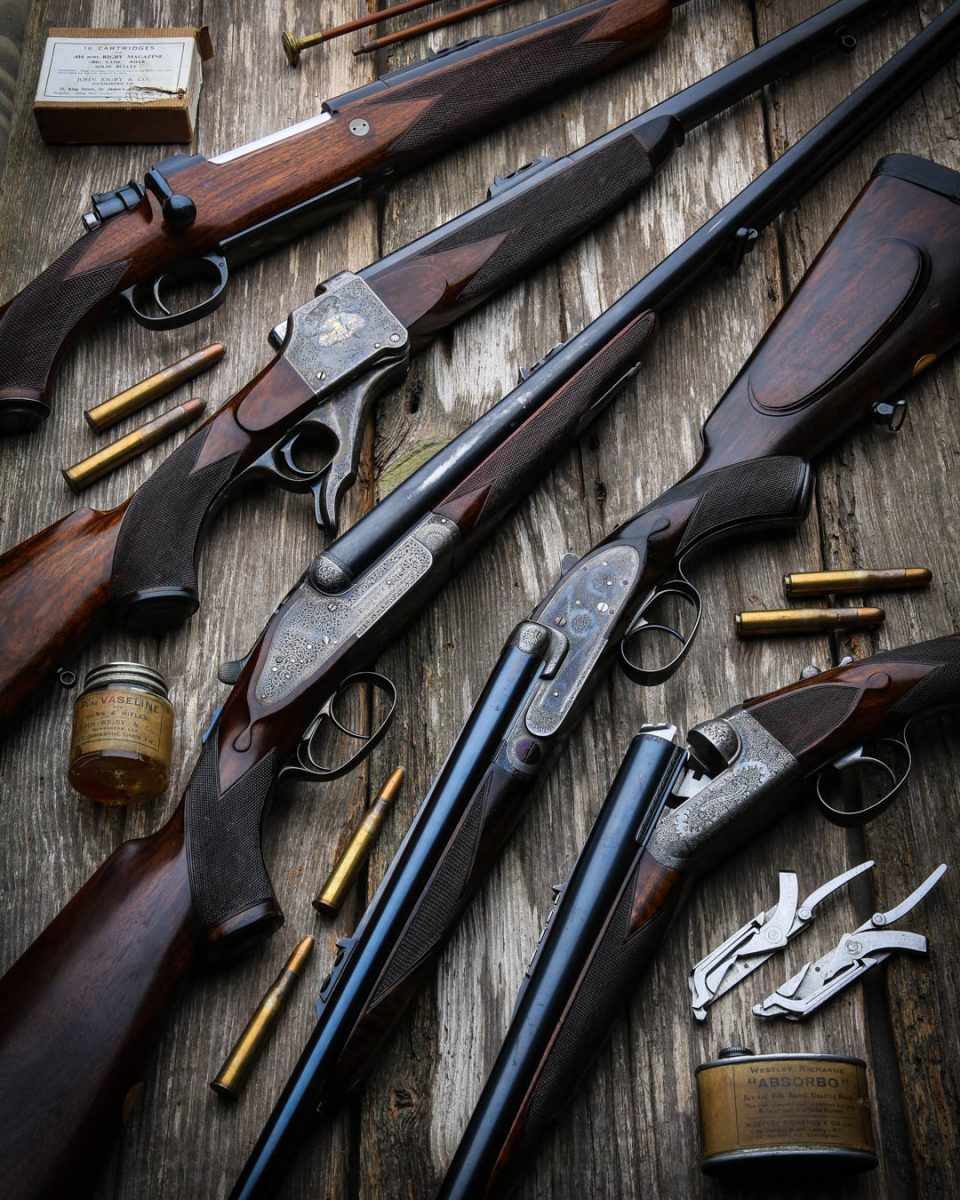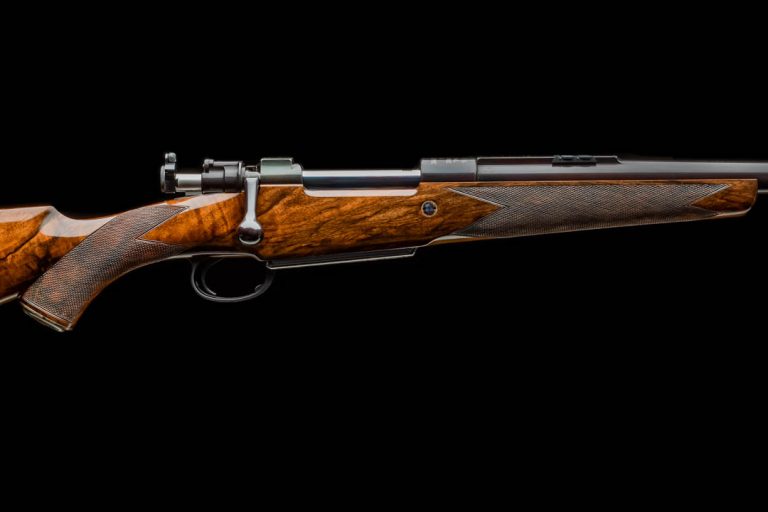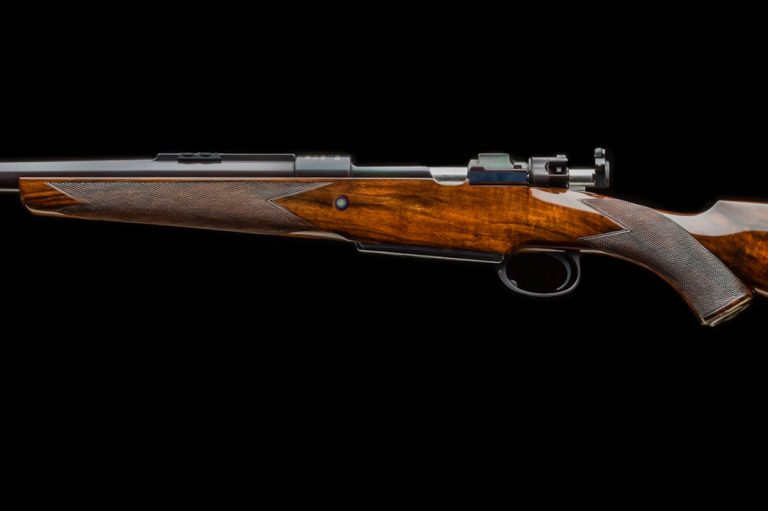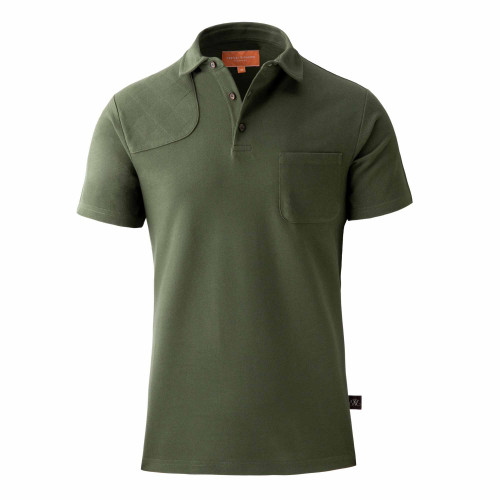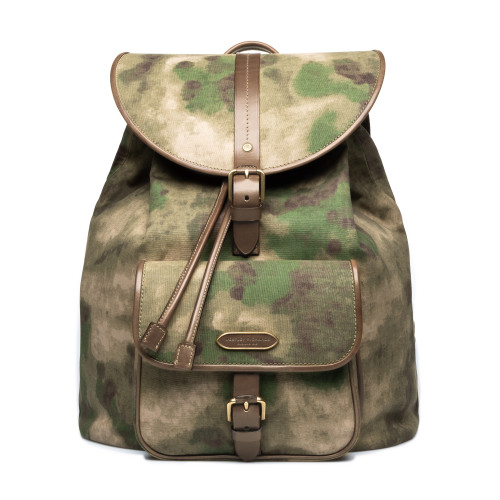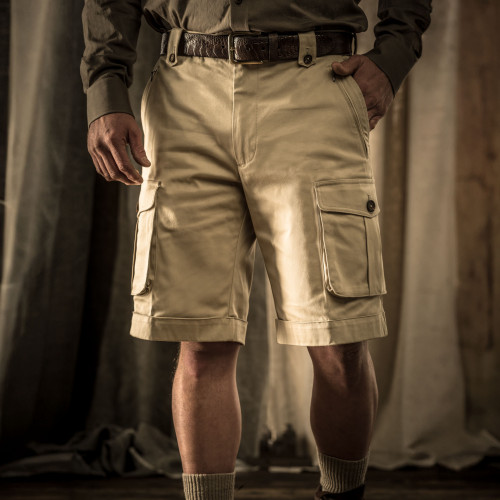The quiddity of these rifles is the perfection of their design, the very high quality standards in which they are made, the beauty of form those qualities produce, and their proven performance throughout modern hunting history. Like the shotguns they produce, there are many reasons rifles made by the top-tier English makers are the gold standard by which all other fine firearms are judged.
Makers like Holland & Holland, J. Rigby & Co. and, of course, Westley Richards & Co. were at the forefront of rifle development in single shot and double rifles as well as bolt action magazine rifles. Most notably, these companies are responsible for some of the most iconic rifle cartridges in safari history, all of which were designed for the Mauser bolt action. Familiar names like Holland’s .375 Belted Magnum, Rigby’s Special .416 Bore for Big Game, and Westley’s .318 Accelerated Express and .425 Magnum Express. All of which remain very popular choices for hunting big game today, over 100 years after their introduction.
Originally introduced in 1911, Rigby’s .416 Bore became immortalized in 1953 when Robert Ruark first published Horn of the Hunter. Ruark’s book is an accounting of a two month safari in British East Africa in the 1950’s which was led by a young professional hunter named Harry Selby. Ruark’s portrayal of Selby largely contributed to the modern stereotype of the white hunter and the book is considered a classic today in safari literature. The wonderful performance of Rigby’s .416 bore cartridge is undisputed, which undoubtedly plays a role in the continued popularity of the cartridge. However, the fact that Selby carried a .416 bore bolt action rifle made by J. Rigby & Co. is perhaps what makes a London made Rigby in .416 bore one of the most iconic of the English made bolt action rifles.
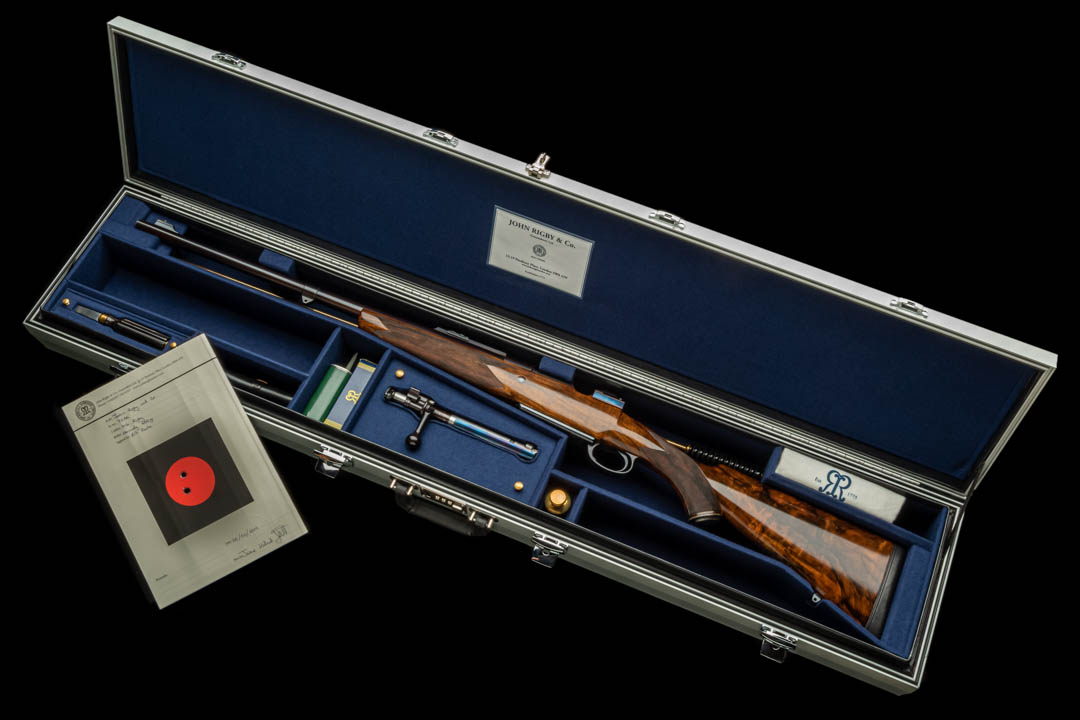
Rigby & Co. continues to make their famed .416 Bore in London and we have an excellent example of one of these modern classics for sale in our U.K. Gunroom. Completed in 2019, the rifle is based on one of the original single square bridge, magnum length Mauser actions, originally designed and made by Mauser in Oberndorf for Rigby’s new .416 cartridge. Original square bridge, magnum actions are considered by many to be the holy grail of bolt actions and it is a special feature of this rifle.
Built as a “lightweight”, the rifle has a 23” tapered barrel with a barrel mounted sling swivel and Rigby’s distinctive hand filed quarter rib and sleeved on foresight. In the traditional form with no provision for a scope, the bolt shroud has the traditional Mauser “flag” type safety and Rigby’s peep sight mounted on the bolt’s cocking piece. As is customary, the cocking-piece peep sight is paired with two folding rear sight leaves only on the quarter rib.
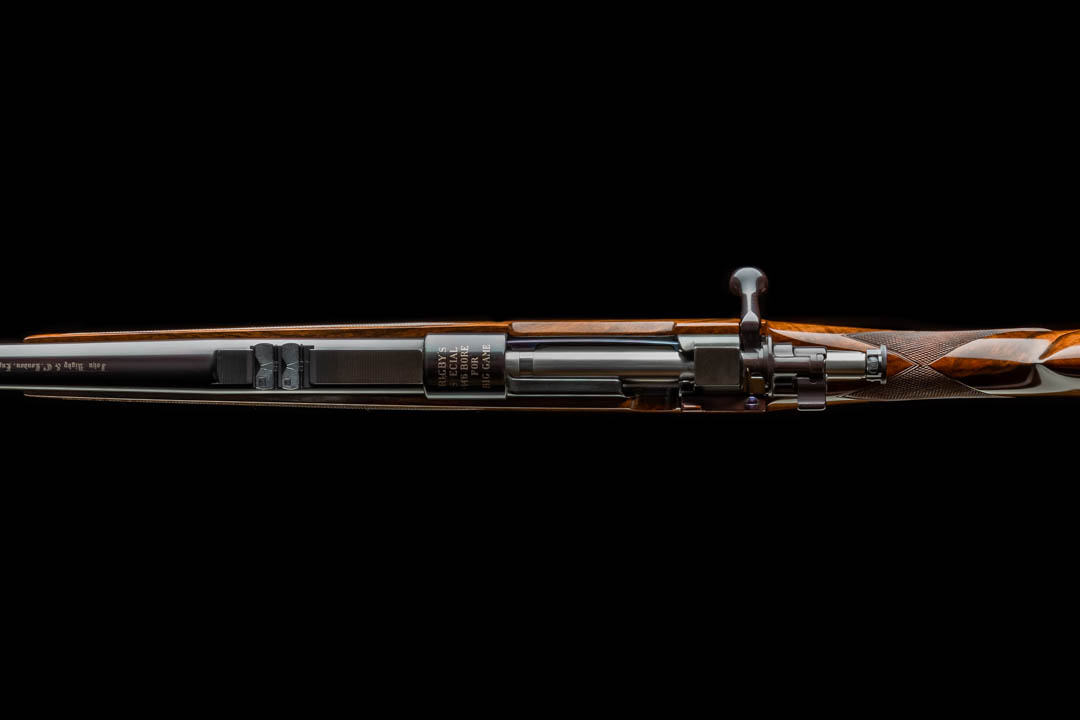
The maker’s name and address are inlayed in gold on top of the barrel in Olde English script and the front ring of the action “Rigby’s Special .416 Bore for Big Game” is also inlayed in gold. The floorplate is engraved with a highly detailed closeup of a Cape buffalo’s eye. The image conjuring up the feeling that this is the eye of an enraged bull at a distance a bit “too close for comfort”; a perspective one could no doubt avoid, were he carrying a rifle like this.
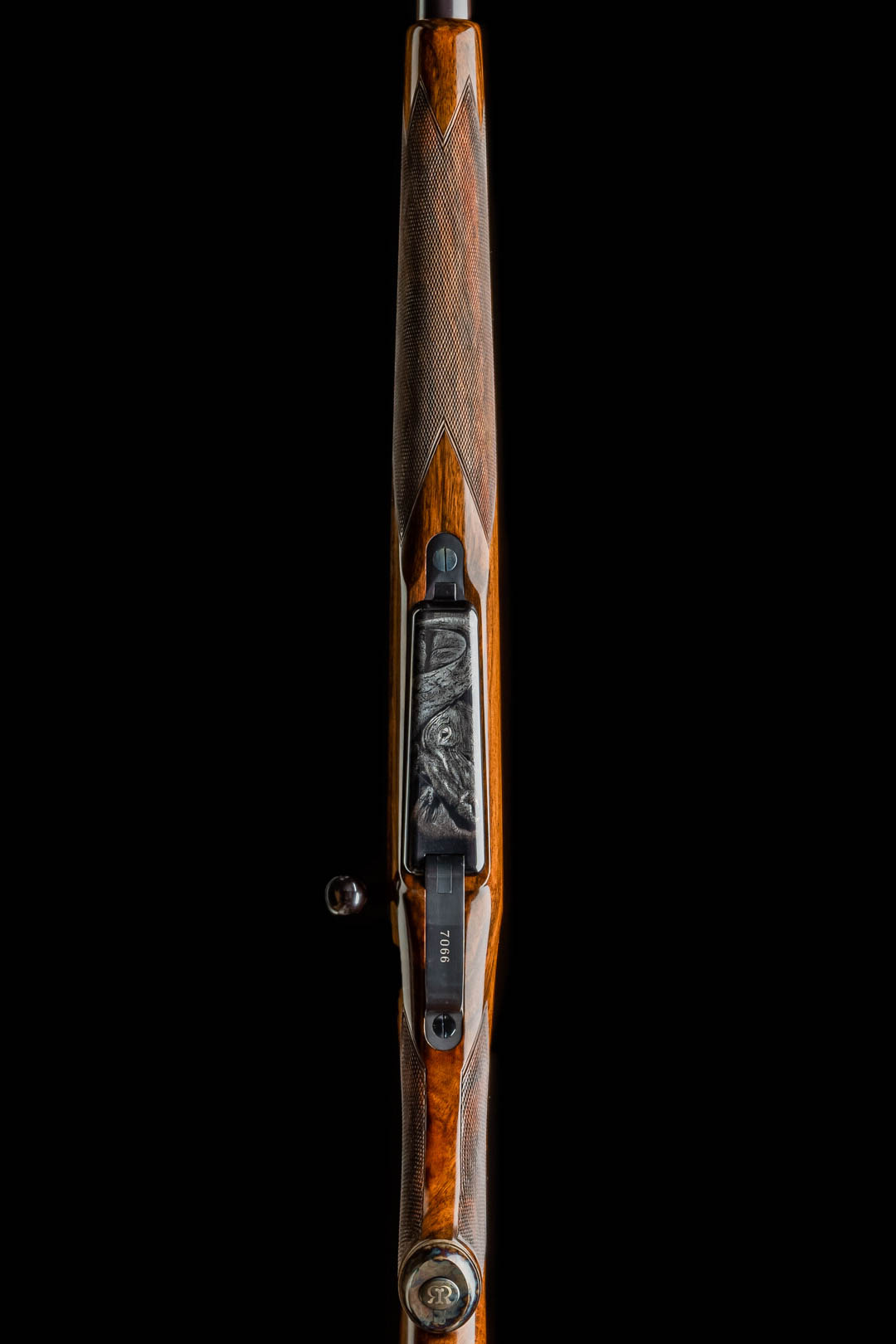
Another modern classic we have for sale is a Holland & Holland Best Quality bolt action magazine rifle chambered in Holland’s mighty .465 Belted Magnum.
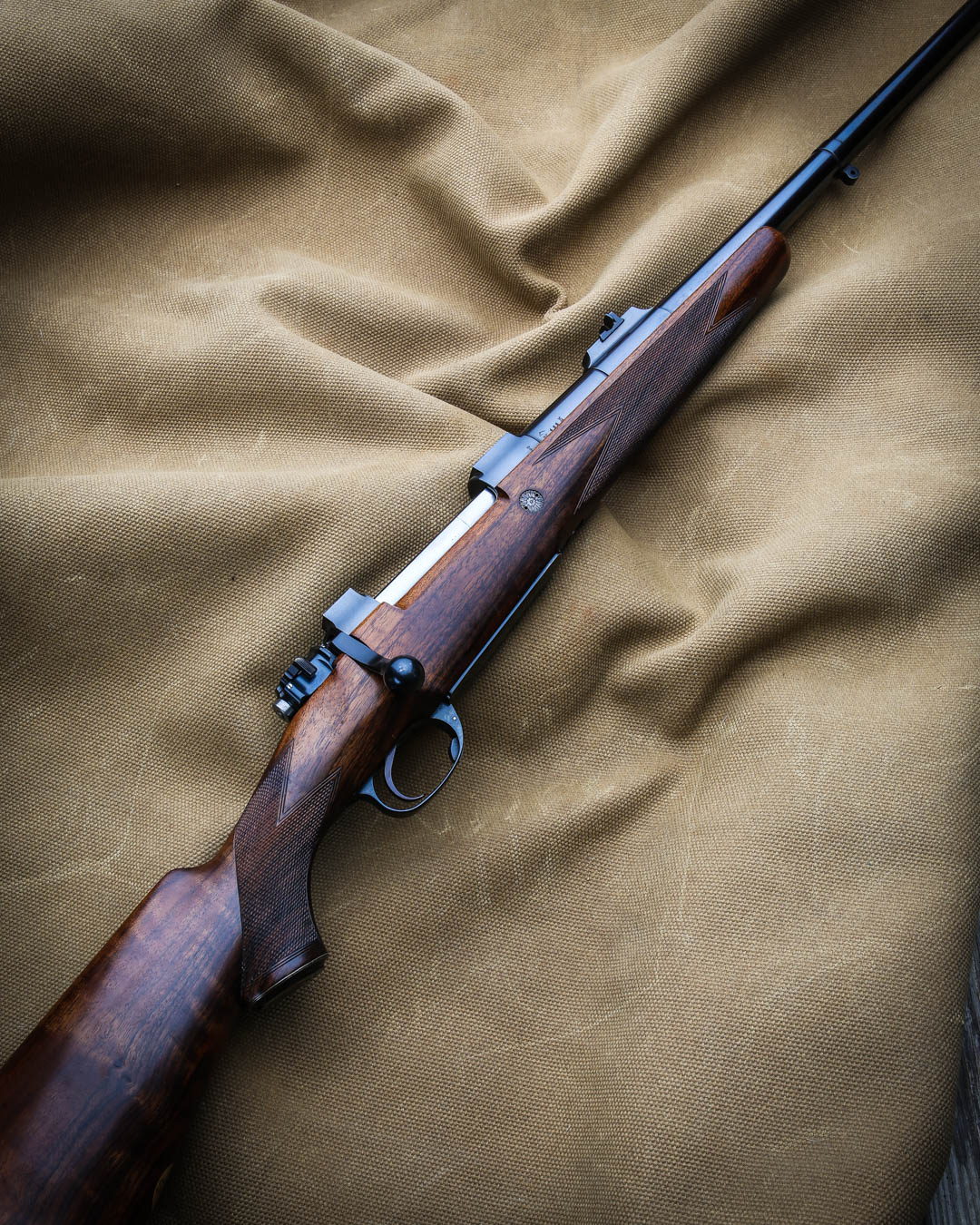
Holland & Holland has a long, rich history of cartridge development dating back to the late 1800’s and the introduction of Cordite. The new propellant simply made much more powerful cartridges and the British gun and ammunition makers quickly turned to various black powder cartridges popular at the time to load them with Cordite. The improved performance of these cartridges loaded with Cordite was a game changer when it came to the pursuit of the world’s largest, most dangerous game and so created the new family of so called “nitro express” cartridges.
Rigby’s is credited as being the first to do so with the introduction of the .450 Nitro Express in 1898. However, the .450 3 ¼” NE had extraction problems early on since it used brass cases originally intended for black powder. These cases, being a bit thin, tended to over expand in the chamber causing them to become stuck after being fired. Looking to duplicate the performance of the .450 NE while also addressing its extraction problem, Holland’s used the .500/.450 BPE as a parent case. Both the .450 NE and .500/.450 NE had 3 ¼” case lengths, but the .500 parent case had a larger diameter giving it a larger case capacity. Both cartridges use the same load of 70gr of Cordite, resulting in the same performance pushing a 500gr, .458” caliber bullet at 2,150 fps. However, the larger capacity of the .500’s case, helped Holland’s version have a lower chamber pressure and avoid the extraction problem.
The .500/.450 NE proved to be quite popular for Holland’s but its success was curtailed by the British ban on the importation of rifles and components in .458” and .577” calibers into India and the Sudan. Both India and Sudan were prime safari areas under British rule and the .450 caliber rifles were certainly the most popular. The new caliber restrictions sent the British rifle makers scrambling to fill the gap. Looking to maintain the performance of the .500/.450 NE, Holland’s stuck with the same .500 parent case but now loaded it with a 480gr, .465” bullet (.468” actual bullet diameter) and originally dubbed the caliber the .465 India Rifle. Introduced in 1907, the .500/.465 NE has remained Holland’s flagship cartridge for its double rifles ever since.
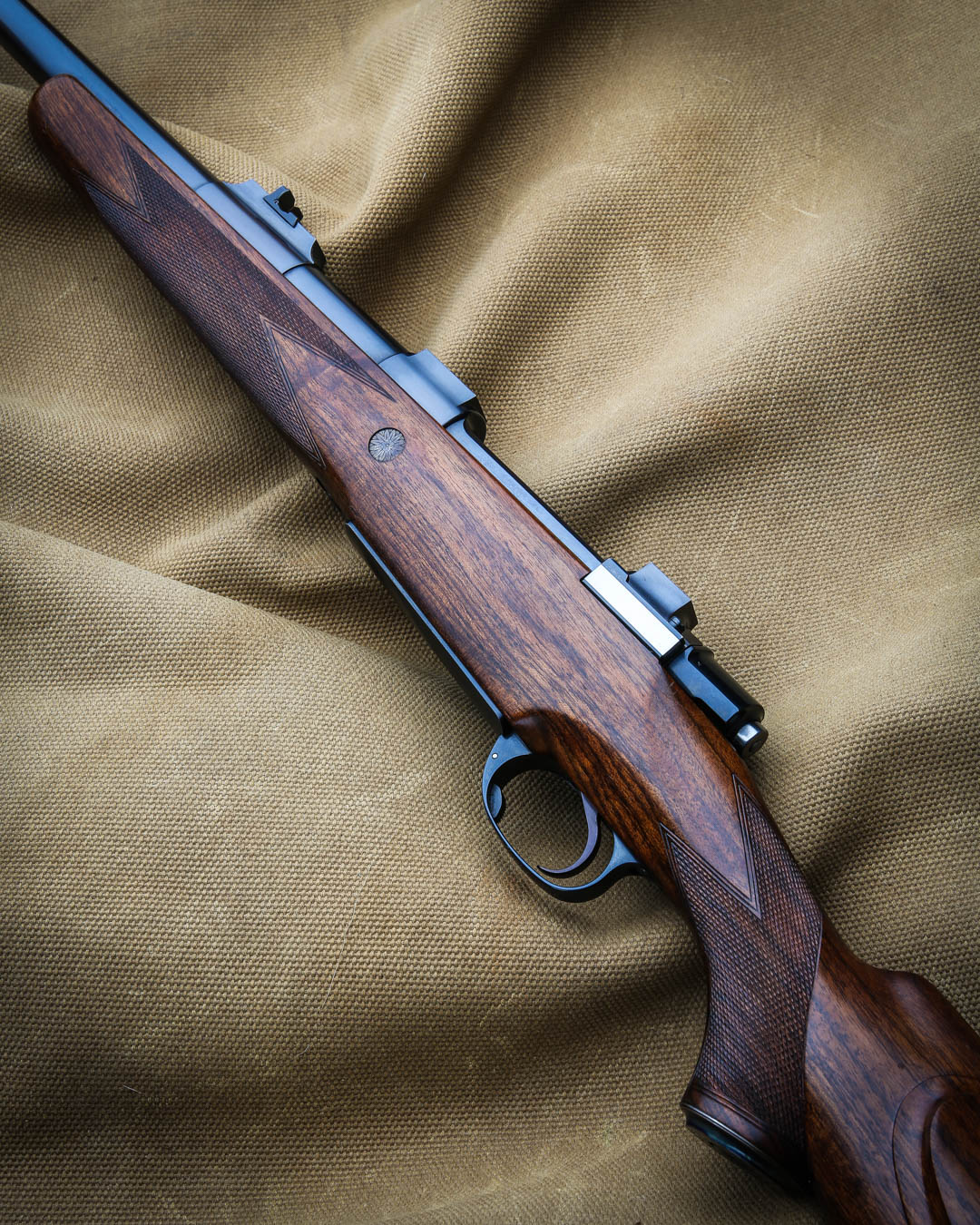
Fast forward to the turn of yet another century and true to the firm’s tradition of developing new cartridges, Holland’s introduced two new rounds for bolt action rifles: the .400 H&H Belted Magnum in 2002 followed by the .465 H&H Belted Magnum in 2003. The two cartridges utilize the belted case design Holland’s made famous in 1912 when the introduction of the .375 Belted/Rimless Magnum.
The Holland & Holland family of magnum cartridges is based on a “rimless” case, meaning the rim of the case has a diameter no larger than the diameter of the case’s body. Also known as a “belted” magnum, the H&H cartridges utilize a thin band of extra brass wrapped around the base of the cartridge just above the extractor groove, or the space between the case body and the case’s rim. This band of brass is called the “belt” and it has a diameter that is wider than the diameter of the case body and this is how the cartridge head spaces in the chamber in place of a rim. The .375 H&H belted magnum is the parent case for the other Holland cartridges like the .275 H&H Mag. (ca. 1912), the .300 H&H (ca. 1919) and the .244 H&H Mag (ca. 1955) as well as most of the “magnum” cartridges introduced in the U.S. after World War II.
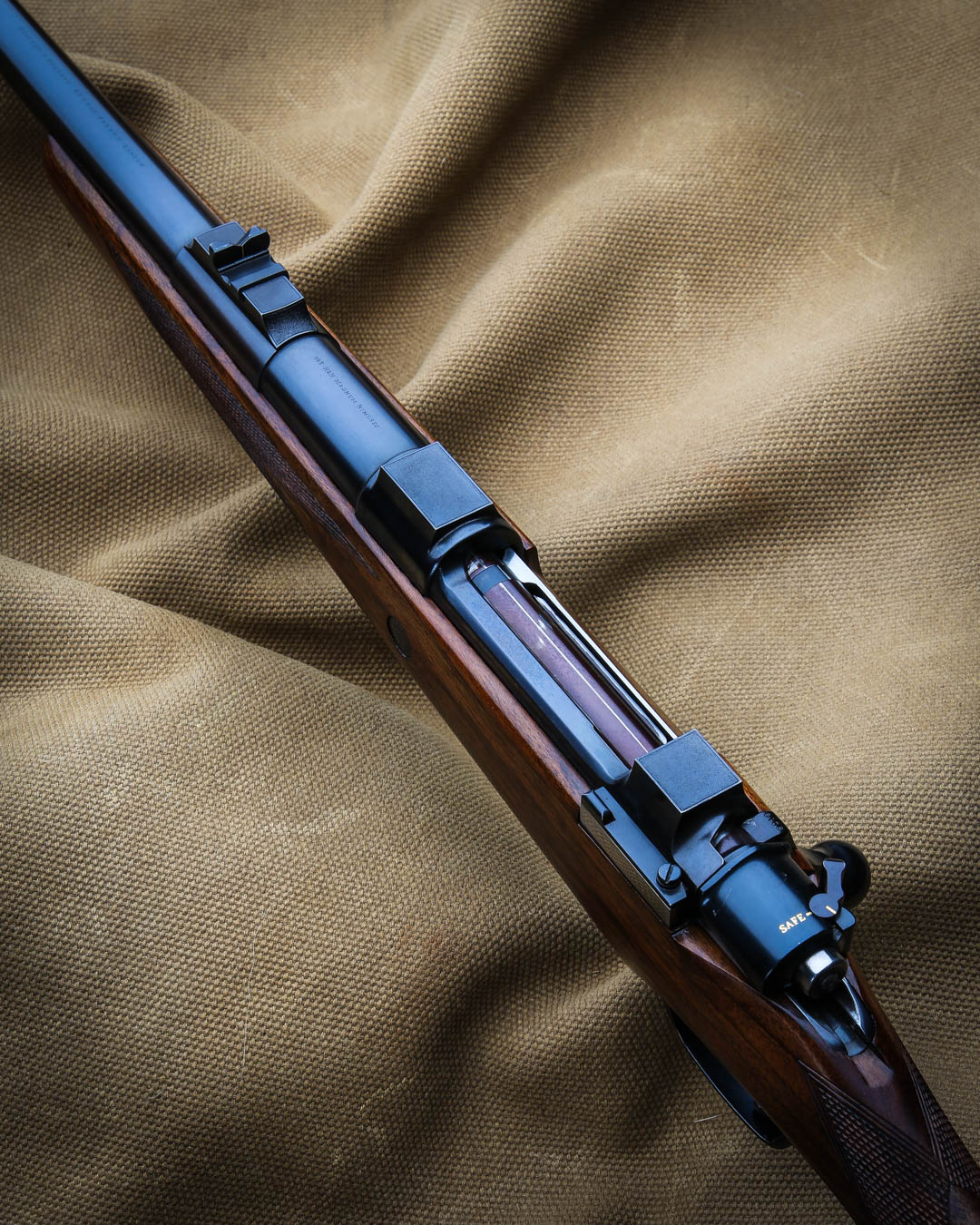
The .375 H&H Mag. pushes a 300gr, .375” caliber bullet at 2,550 fps and proved suitable for hunting any game in the world. Despite the versatility that Holland’s .375 H& Magnum is renowned for, the firm saw a demand from its clientele to produce a cartridge with a larger caliber. Holland’s realized they really needed two new cartridges to satisfy such a demand. For one thing, the .400” caliber cartridges like .404 Jeffery and .416 Rigby have remained quite popular ever since their introduction prior to WWI. On the other hand, .458” caliber cartridges for bolt action rifles had also become popular after WWII starting with cartridges like the .458 Winchester Magnum and later a full size version, the .458 Lott. Taking it one step further, some rifle and ammunition makers used a .416 Rigby size case necked up to a .458” caliber bullet, a practice dating back to Roy Weatherby’s .460 Weatherby Magnum introduced in 1957. This trend found favor again in the early 1990’s when cartridges like the .450 Dakota and .450 Rigby were introduced.
The .400 H&H Magnum is basically a .375 H&H case necked up to accommodate a .411” caliber bullet, with the shoulder pushed back giving it a nice long neck to secure the bullet in the case. The .400 H&H pushes 400gr bullet around 2,350 fps matching the performance of the other tried and true rifle cartridges in the .400” calibers and filled that space in Holland’s repertoire.
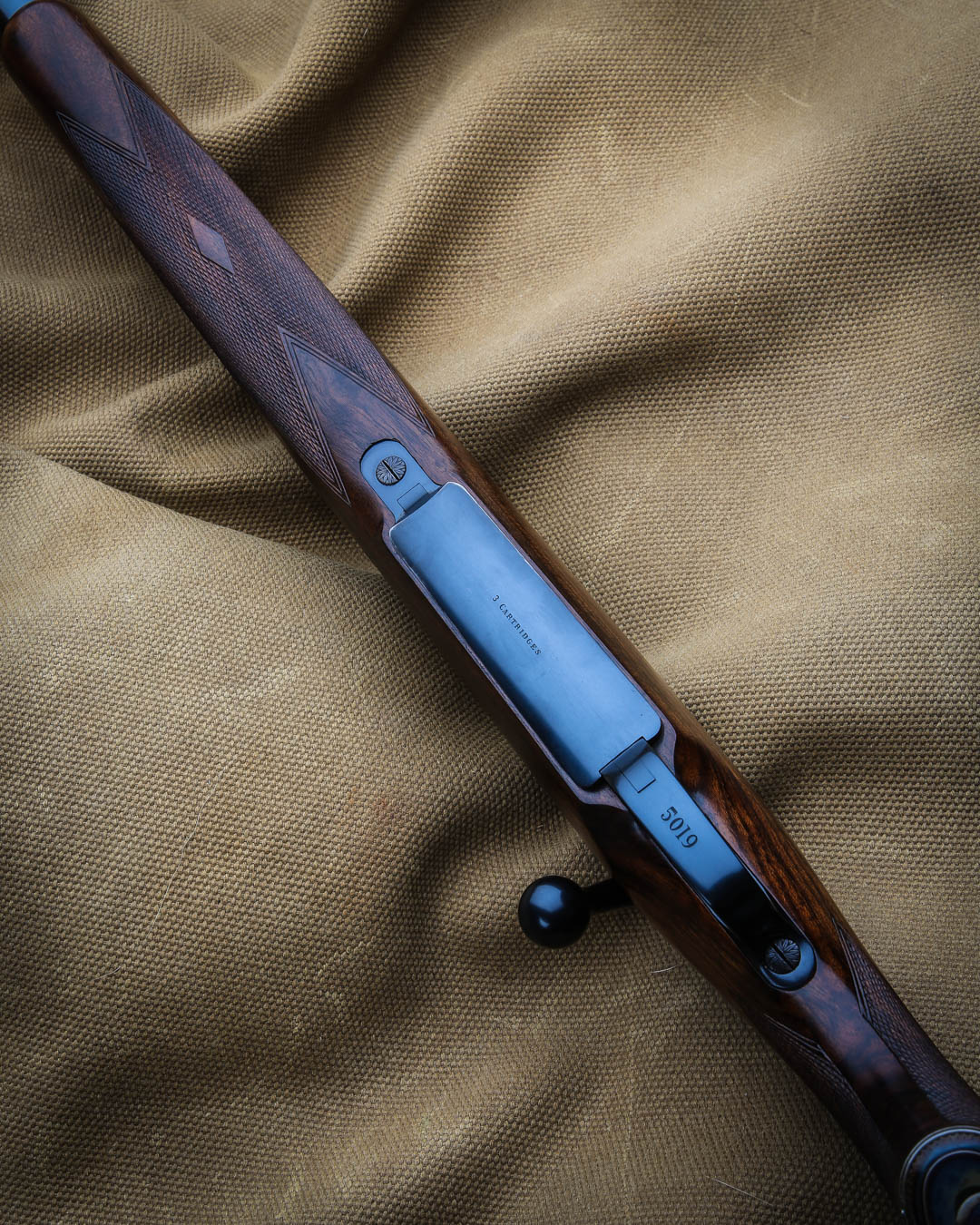
This Holland & Holland .465 Belted Magnum was bought new in 2015. Based on a modern, Johansen magnum length, double square bridge action with a 4+1 capacity, it has a 24” barrel with 1 standing/1 folding rear sight and a banded foresight with Holland’s folding sight protector. The rifle has seen some use but overall is in excellent shape. The .465 Magnum performance is unquestioned appealing to hunters, but original Holland & Holland rifles chambered for this cartridge are turning out to be quite rare, something collectors should be paying attention to as well.
When it comes to big game rifles made in London, J. Purdey & Sons is not the first maker to spring to mind. I read somewhere that Purdy has made less than 500 double rifles in their entire history and did not even make bolt action until the early 1930’s, something the makers I mentioned previously were doing far sooner. Still, I just put up for sale a bolt action magazine rifle completed by Purdey’s in the early 2000’s and testament to the firm’s celebrated reputation.
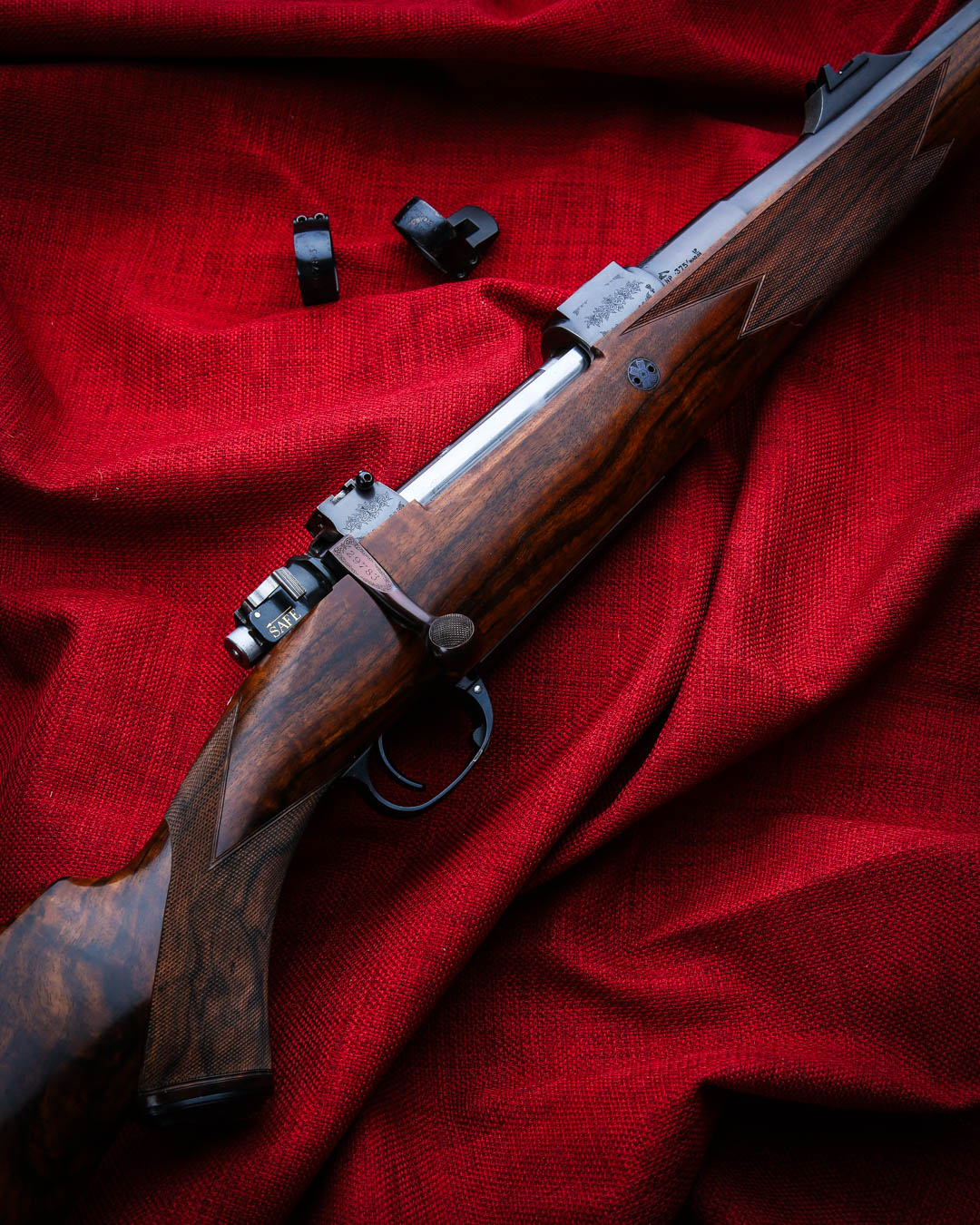
Also based on a modern, magnum length Mauser type action with a 4+1 capacity the action is fitted with EAW swing mounts and 30mm rings appropriately engraved with the Maker’s name and serial number of the rifle. The 23” barrel has an island rear sight with 1 standing/1 folding leaf and a ramp foresight with flip-up night sight. The Maker’s name is engraved on top of the barrel and the sides of the action and bottom metal are appropriately engraved with a rose & scroll pattern reminiscent of the firm’s famed R&S engraving found on their double guns and rifles.
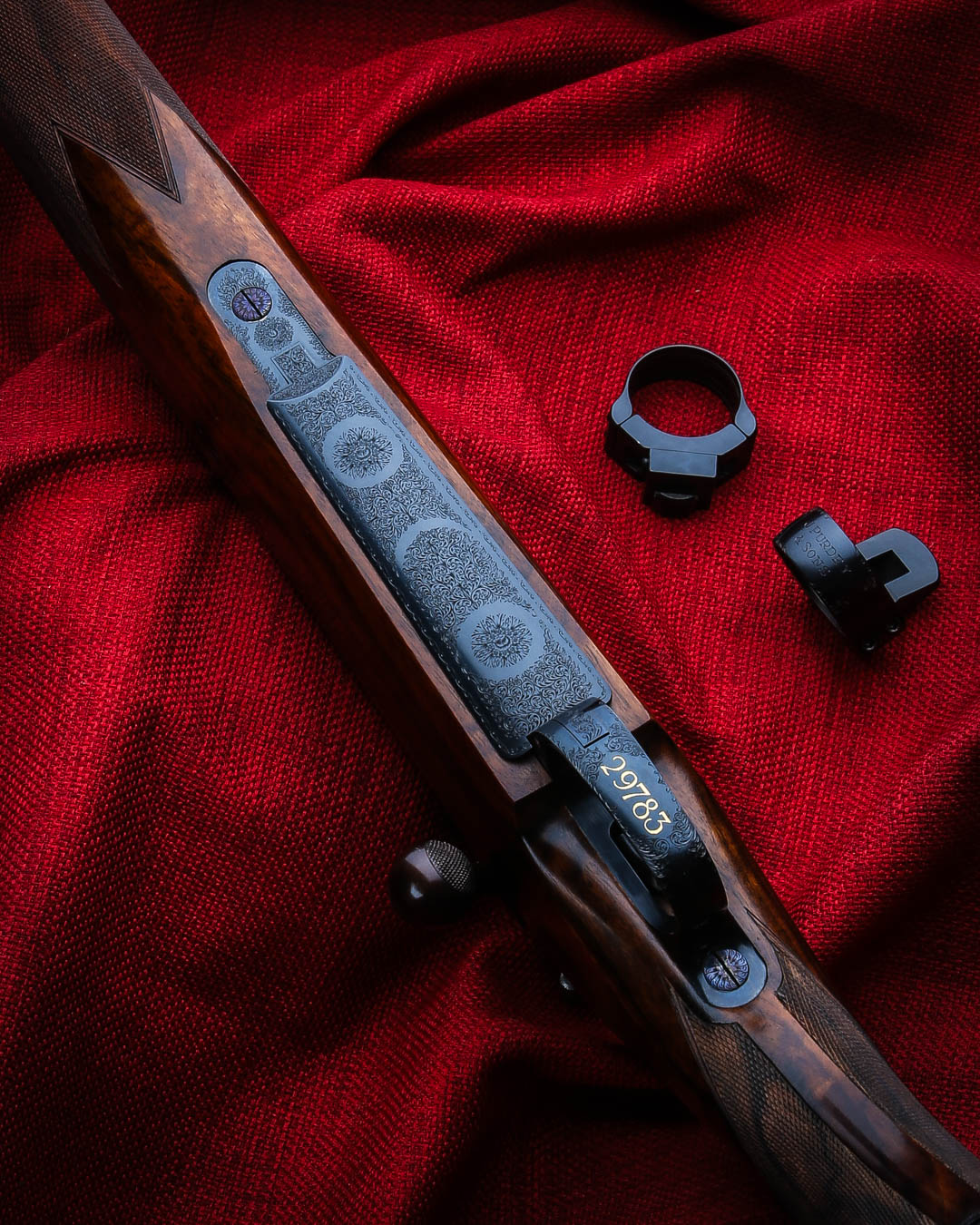
The rifle is chambered in the venerable .375 H&H Magnum. No matter how nice a rifle is, chambered for the “wrong” cartridge, it can prove quite hard to sell at any price. However, I often tell my customers that it is never an apology to have a rifle chambered for .375 H&H, no matter who made it. The versatility of the cartridge and its proven track record makes it one of the most popular big game cartridges in history.
As one would expect from Purdey’, this rifle is “best quality” in every respect. A very well made rifle, chambered in a very practical cartridge, along with its rarity, makes this a rifle afficionados of fine firearms should pay close attention to.
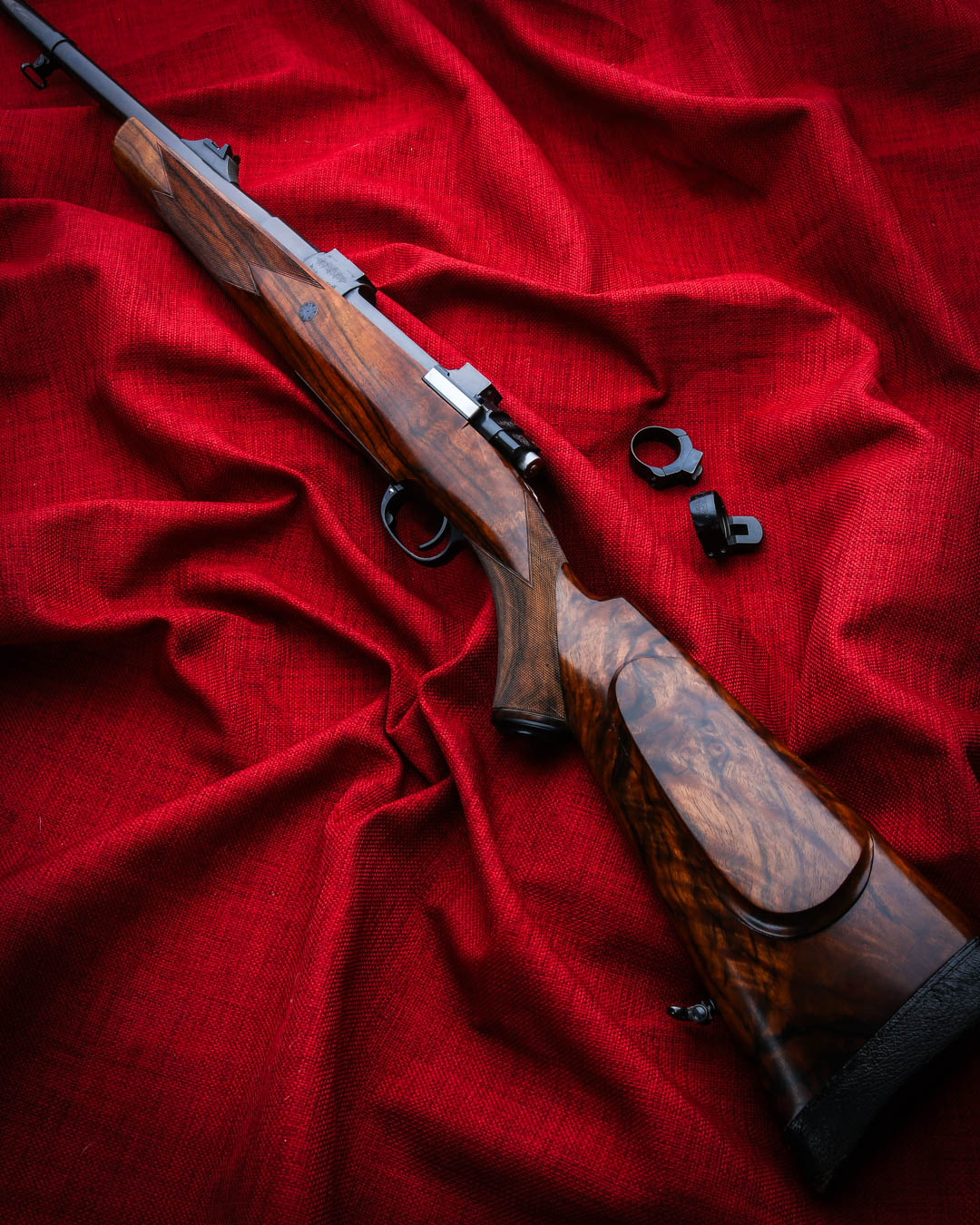
The rifles mentioned here, as well as a carefully curated selection of other fine firearms, can be viewed on our website at: www.westleyrichards.com/usedguns
To discuss any of the firearms we have for sale or should you or someone you know be looking to divest of some firearms, please contact L.D. McCaa at the U.S. Agency.
+1 (850) 677-3688
Westley Richards has an outstanding reputation for supplying a comprehensive selection of pre-owned guns and rifles. We pride ourselves on our in depth knowledge of the many sporting arms built over the last 200 years, placing particular emphasis on big game rifles, like the 577 Nitro Express, 505 Gibbs and 425 Westley Richards. Whether looking to grow or sell your collection of firearms, or simply require a trusted evaluation, our team from the sales department would be delighted to hear from you. To view the latest available, head to the used shotguns and used rifles pages, and for those interested in new firearms, explore our custom rifles and bespoke guns pages.



 Enquire
Enquire







